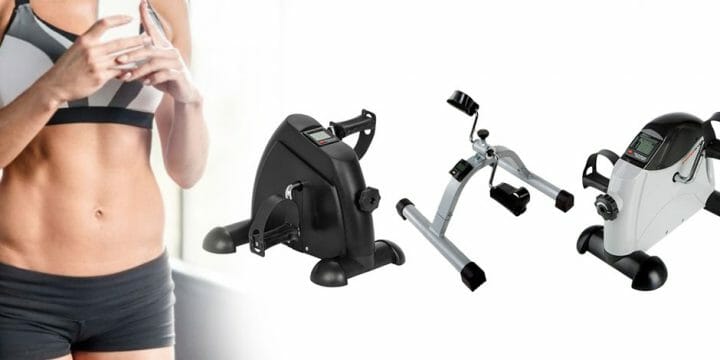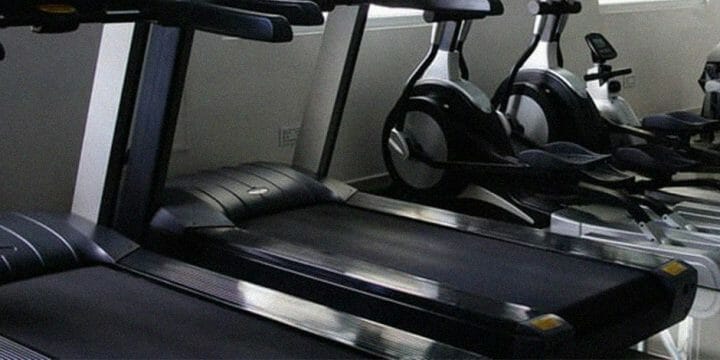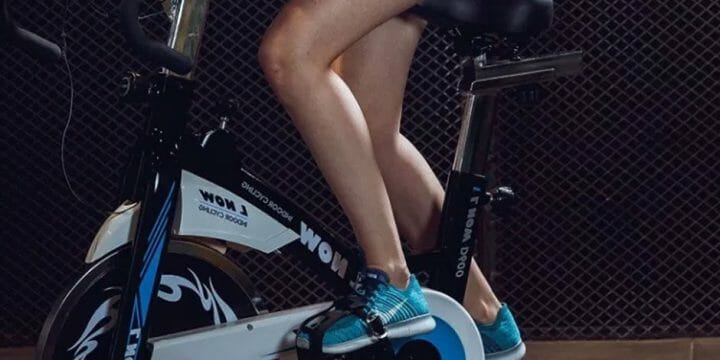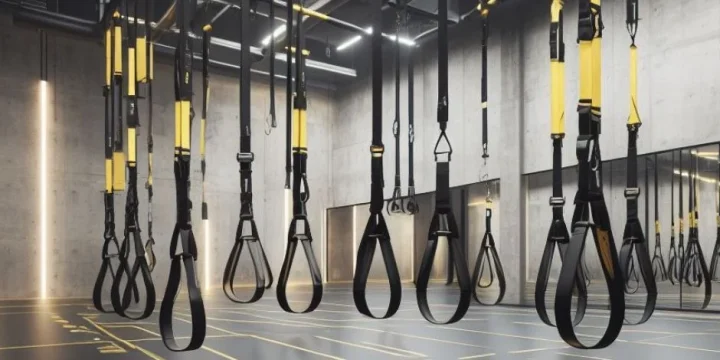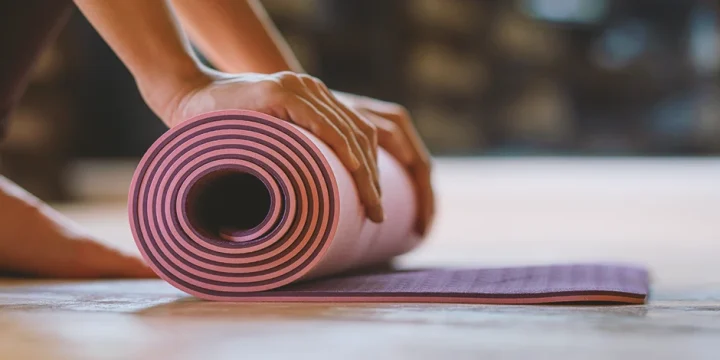Healthy habits established during adolescence lead to better health and form long-lasting habits into adulthood.
Physical fitness is especially crucial for teenagers, as it helps the body become stronger, leaner, and healthier by adapting and developing to the surrounding environment.
As a fitness trainer, I’ve spent many hours experimenting with various exercises to find the perfect ones for teenagers to kickstart their workout journey.
Here are the results of my research and experience with young clients.
Quick Summary
- For teenagers, the seven most effective workout routines include yoga, bench press, push-ups, dips, squats, dumbbell lunges, and butterfly breath.
- The ideal age to begin these workout routines is during the early teenage years, between 12-15 years, to establish a strong foundation for physical fitness.
- A study in the Journal of Healthcare Engineering found that early physical activity correlates with higher IQ and greater chances of academic and professional success later in life.
- In my opinion, these exercises are crucial for teenage development, balancing physical strength with mental and emotional health, which is key to holistic growth.
The Best Workouts for Teenagers

The best workout for teens comprises a mix of meditation, yoga, and strength-training exercises.
1. Yoga
Yoga helps teenagers burn fat, manage their emotions, address stress, identity issues, and enabling them to navigate their teenage years more efficiently.
In my training sessions, I've seen yoga significantly help teens manage stress and boost self-confidence.
Here are two common yoga poses recommended for teens:
- Alternate nostril breathing: This is a technique to help you feel calm and balanced. Sit comfortably and place your right thumb on your right nostril. Exhale slowly through your left nostril and count to 5, then inhale through your left nostril and count to 5 again. Use your right finger to close your left nostril, and repeat.
- Downward facing dog: To do this pose, start on your hands and knees and lift your knees off the ground. Push back and raise your tailbone, allow your heels to move toward the floor, and hold for 2–5 minutes.
2. Bench Press
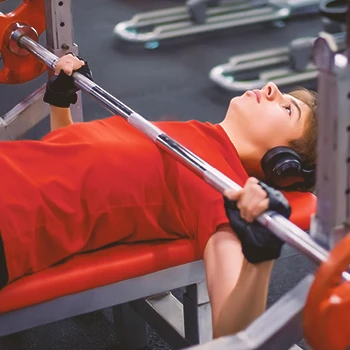
The bench press focuses on the upper-body muscles and is a multi-joint exercise.
There are different types of bench presses, such as those performed in incline or decline positions or with a narrow grip on the barbell.
Through bench pressing, many of my teenage clients have effectively strengthened their upper-body muscles.
Here’s how to perform a regular bench press with a barbell:
- Lie down on your back and place your feet flat on the ground.
- Hold the barbell with a wider grip than your shoulder width, and wrap your thumbs around the bar.
- Hold the barbell above your upper chest with your arms fully extended.
- Slowly lower the barbell until it reaches the middle of your chest, making sure that your forearms are perpendicular to the floor at the bottom position.
- Pause briefly, then push the barbell back up.
3. Push-Ups
Push-ups improve chest and core strength and have variations for different levels. They can be done as bodyweight, circuit, or strength workouts.
I often start my younger clients on push-ups, a versatile exercise for building core and chest strength.
Here’s how you do them:
- Begin by assuming a push-up position with your arms straight and your hands placed a little wider than your shoulder width.
- Ensure your body is straight from your ankles to your head.
- Gradually lower your body until it is nearly touching the ground.
- Hold this position briefly, and then push yourself back up.
You can add push-ups to the end of all your workouts to get better at them.
4. Dips
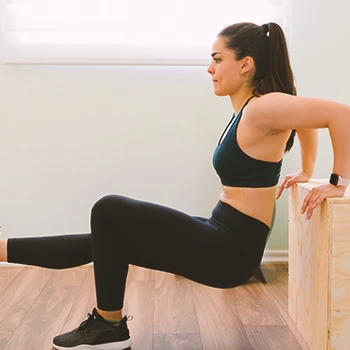
Dips are an effective strength training workout that targets multiple muscles, including the triceps, shoulders, chest, and core, all in one movement.
The best part is that dips don’t require special equipment, as you can perform them using a chair, sofa, table, or flat surface.
In my experience, dips have been excellent for teens to target triceps and shoulders without needing equipment.
Follow these steps to perform dips:
- First, ensure you have enough space to use the edge of your chair.
- Sit on the chair and grip the edge with your hands while extending your legs out in front of the chair.
- Lower your body towards the ground by bending your elbows, and keep your back close to the chair edge.
- Continue lowering until your elbows are at approximately 90 degrees.
- Straighten your elbows and bring your body back up to the starting position.
5. Squats
Squats are a time-efficient way to shape and strengthen your lower body and back muscles. Multiple variations of squats can provide distinct benefits.
From my training experience, squats are a go-to for efficiently strengthening teens' lower body and back.
The classic technique involves these steps:
- Begin by standing with your feet spaced shoulder-width apart and your toes pointing slightly outward. Keep your arms straight out in front.
- Lower yourself by bending your knees and pushing your hips back while maintaining a straight back and an upright torso.
- Straighten your legs by pushing through your feet when your knees are at a 90-degree angle or lower.
6. Dumbbell Lunges
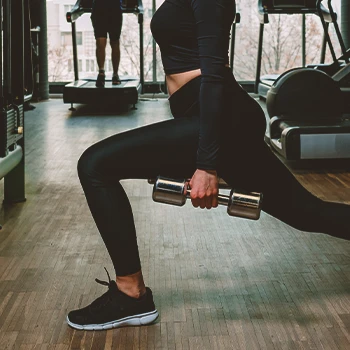
You can do lunges with or without weights. However, dumbbells work the upper legs and buttocks in isolation.
It’s an excellent functional exercise for lower body strength and circuit training.
Dumbbell lunges have proven effective in my sessions for isolating and strengthening teens' upper legs and buttocks.
Follow these steps to perform dumbbell lunges:
- Stand with your feet parallel and hip-width apart while holding dumbbells.
- Inhale and step forward with your right leg while keeping your weight on your left heel and both feet facing forward.
- Transfer your weight onto your right foot and bend your right knee while pushing your hips back.
- Continue to lunge until your shin bone is vertical to the floor and your right knee is in line with the second toe of your right foot.
- Push off with your right foot and return to the starting position.
7. Butterfly Breath
This is a meditation exercise that prepares you for yoga and other heavy activities. Practicing this exercise regularly helps improve core stability and diaphragm strength.
I've found the butterfly breath to be a great starting meditation exercise for my teenage clients before intense workouts.
Here's how to perform a butterfly breath:
- Stand with your feet slightly apart and your arms by your sides.
- Inhale deeply and raise your arms slowly and gently to the sides.
- Move your arms harmoniously with your breath and keep them light and flowing.
- Lift your arms until the inhalation is complete, and then lower them back down, exhaling slowly through your mouth.
When and How to Start

Early teenage years, i.e., 12–15, are a good age to start slow because the youth and vigor of this age come with numerous benefits.
I've found starting teens on fitness routines around 12–15 years old builds a solid foundation for lifelong health.
You are highly energetic and agile, think quickly, and have a body that can easily gain muscle mass.
Early teenagers should focus on developing athleticism, losing weight, and maintaining a healthy lifestyle before starting weightlifting.
This approach will make the transition to working out in the weight room easier.
To build natural muscle, engage in bodyweight strength training exercises, sprints, and other sports that you enjoy that improve your speed, agility, and explosiveness.
Benefits of Working Out for Teenagers

Working out during your teenage years has several benefits.
In my training career, I've seen firsthand how teenage workouts boost self-esteem and physical health.
Some of them include the following:
- Bone, joint, and muscle growth: Regular exercise can build muscle and strong joints and bones, promoting a positive body image and boosting self-esteem.
- Weight management: Engaging in physical activity can also help overweight teenagers lose weight as they burn calories and maintain a healthy weight by building lean muscle and burning fat.
- Higher IQ: Research published in Journal of Healthcare Engineering suggests that being physically active at a young age is associated with a higher IQ and an increased likelihood of achieving higher-than-average educational and professional success later in life [1].
Besides the physical improvements, regular exercise can have a profoundly positive impact on a teenager's mental health, helping to alleviate symptoms of depression and anxiety, boost self-esteem, and improve overall mood.
Factors to Consider
Starting your workout is an exciting idea. However, you must consider some essential factors before hitting the gym:
- Variety, experimentation, and moderation are vital for teens in sports to avoid burnout and injury.
- Emphasize effort, coordination, and sportsmanship over wins or competition to avoid anxiety and quitting.
- Finding an enjoyable form of movement can lead to a lifelong love of movement and enhance health beyond measure.
- Slowly build towards compound movements, which work multiple muscles and joints at once, as opposed to isolation exercises that focus on a single joint and muscle group.
“Workout is a very important matter for your health, just like diet, and exercise can be fun—or must be fun—in order to do it."
- Dr. Takeshi Tsuda, M.D., Pediatric Cardiologist
Building a Workout Routine

Building a workout routine takes time, effort, and a lot of experimentation to determine which exercise regimen works well for your body.
From my coaching, I recommend starting with simple exercises and gradually building up to a full-body workout.
Here are a few tips to help you build your workout program:
- Begin with simple exercises such as stretching and walking to get comfortable with working on your body.
- Progress to a more challenging full-body workout like jogging, and then train hard. Add exercises like the push-up, leg press, jump rope, crunches, and all the exercises explained earlier.
- For more resistance, use free weights or machines and do exercises like presses, curls, raises, rows, and weighted squats.
- Start with easy goals and exercises, then transition to resistance and strength training exercises.
The Importance of Nutrition
Ensuring a balanced diet has been key in my teen clients' fitness progress and overall health.
Active teenagers have unique nutritional needs; it's important to provide guidance on a balanced diet rich in essential nutrients, proper hydration strategies, and sensible use of supplements when needed for optimal performance and recovery.
Nutrition and exercise improve body composition, musculoskeletal health, and cognitive performance and prevent metabolic diseases, according to the Nutrients [2].
Here are some suggestions for maintaining healthy nutrition:
- Make breakfast with healthy foods a regular part of your routine.
- Keep healthy snacks for exercise in your fridge and gym bag.
- Achieving the appropriate combination of carbohydrates, enough protein, healthy fats, and other nutrients can fuel your workout regimen.
Kids in their early teenage years often get their bodies' protein requirements through diet, but we recommend a high-quality protein powders for teenagers over 16.
FAQs
Is It Safe for Teens to Lift Weights?
Yes, it is safe for teens to lift weights as long as they are not overexerting themselves. However, improper form, inadequate supervision, and lifting too heavy weights may lead to injury.
How Much Exercise Should Teenagers Do Each Day?
Teenagers should exercise for about 60 minutes or more of moderate-to-vigorous physical activity each day.
References:
- https://www.ncbi.nlm.nih.gov/pmc/articles/PMC8808202/
- https://www.ncbi.nlm.nih.gov/pmc/articles/PMC6682932/
About The Author
You May Also Like
